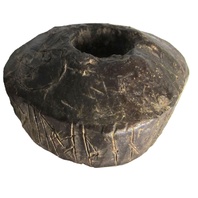
Viking Objects
Saltfleetby Spindle Whorl (LIN-D92A22)
A lead spindle whorl found at Saltfleetby St Clement, Lincolnshire, and inscribed with runes. The dating of the spindle whorl is uncertain, and dates in the late Viking Age, the early eleventh century, or even the twelfth century, have been suggested. The spindle whorl is inscribed with Scandinavian runes that appear to mention the Norse gods Odin and (possibly) Heimdall. The object is likely to have been produced locally, though the runes demonstrate contacts with the Scandinavian world of the time, perhaps especially Norway. John Hines has suggested the translation ‘Óðinn and Heimdallr and Þalfa, they are helping you, Úlfljót, and …’. For further discussion of the text, see the open-access article by Jesch referenced below. For more on runes, see our Runes page.
Read More
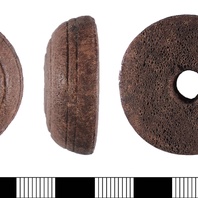
Viking Objects
Bone Spindle Whorl (LIN-9D24C2)
Fibres were spun into thread using a drop-spindle of which the whorls were made of bone, ceramic, lead, or stone and acted as flywheels during spinning. Other bone and ceramic spindle whorls with decorative circumference grooves are known from Anglo-Saxon sites elsewhere in areas such as West Stow, Suffolk.
Read More
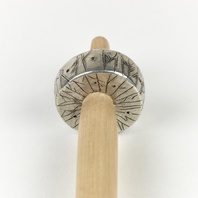
Viking Objects
Reproduction Drop Spindle
A reproduction of a lead alloy spindle whorl with a runic inscription, modelled on a find from Saltfleetby St Clement, Lincolnshire. Fibres were spun into thread using a drop-spindle of which the whorls were made of bone, ceramic, lead, or stone and acted as flywheels during spinning.
Read More
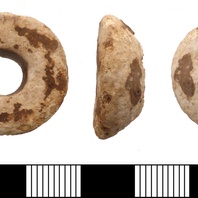
Viking Objects
Lead Spindle-Whorl (PUBLIC-23FB38)
This lead spindle-whorl is undecorated, with a thick white patina and some patchy brown staining. Fibres were spun into thread using a drop-spindle of which the whorls were made of bone, ceramic, lead or stone and acted as flywheels during spinning.
Read More
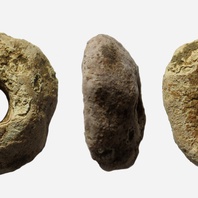
Viking Objects
Spindle-Whorl (LEIC-8D89EA)
A small, plain, undecorated lead-alloy spindle-whorl. Fibres were spun into thread using a drop-spindle of which the whorls were made of bone, ceramic, lead or stone and acted as flywheels during spinning.
Read More
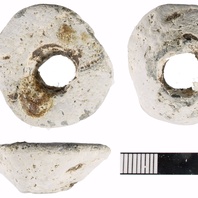
Viking Objects
Lead Spindle-Whorl (NLM-1E7FD8)
This cast lead spindle-whorl is classed as a Walton Rogers A1 type and, due to its mass, it was likely used for spinning yarn. Fibres were spun into thread using a drop-spindle of which the whorls were made of bone, ceramic, lead or stone and acted as flywheels during spinning.
